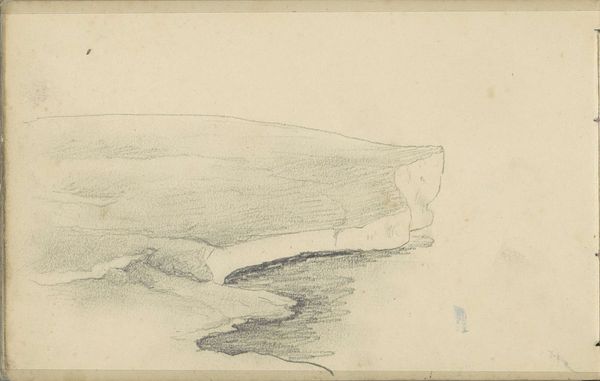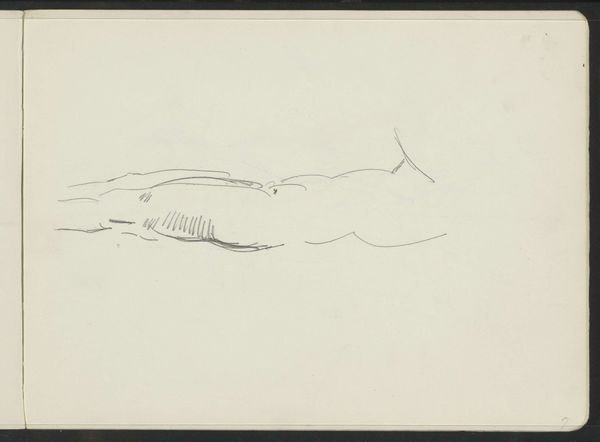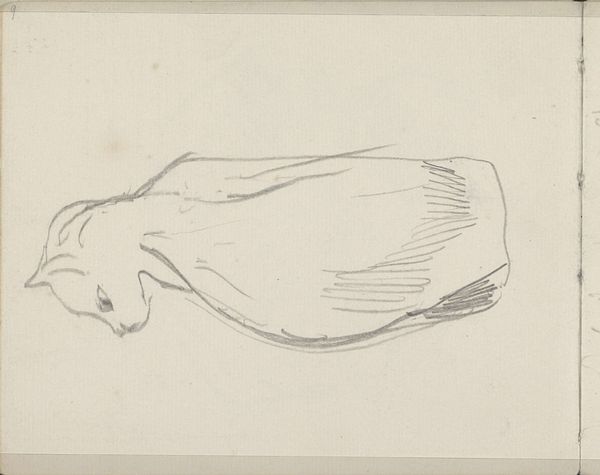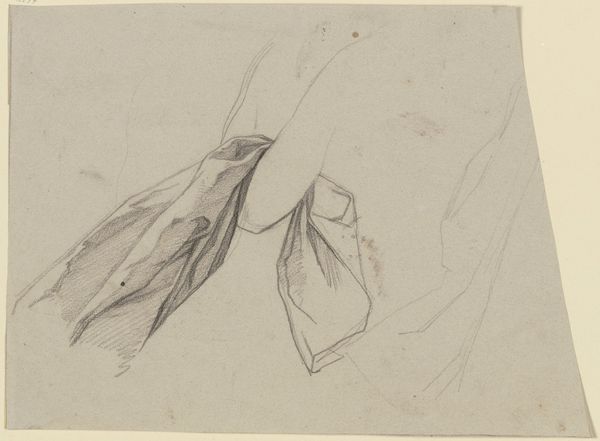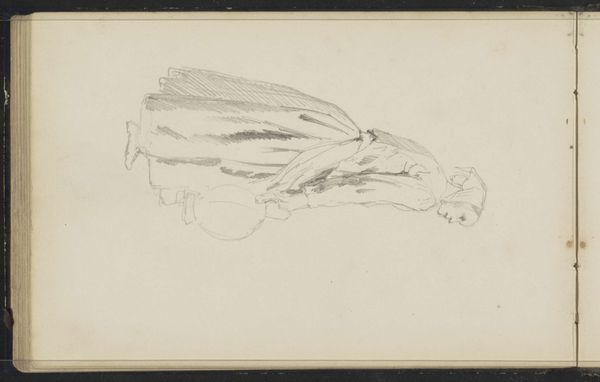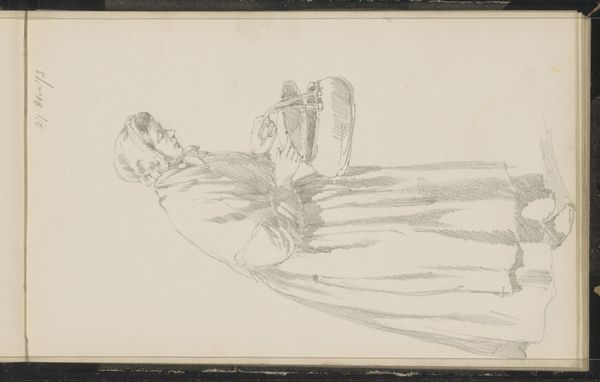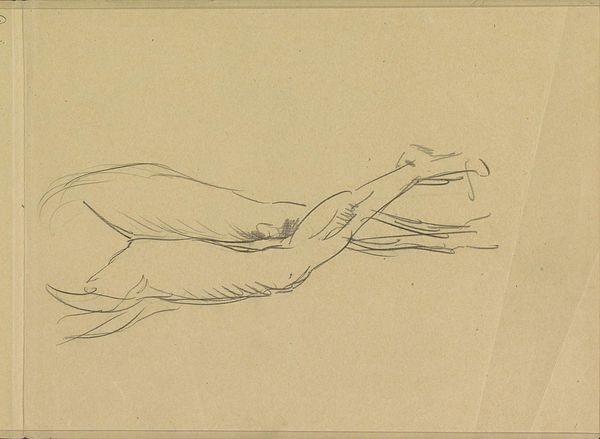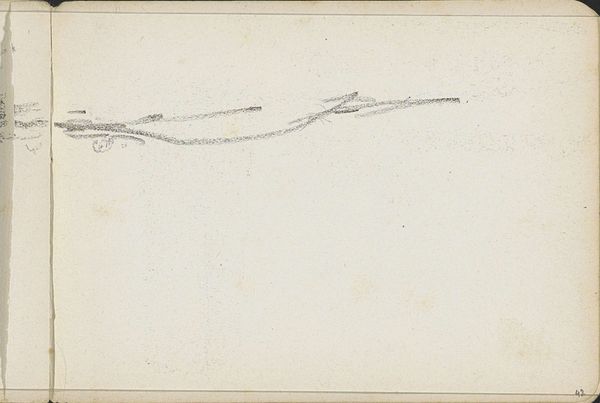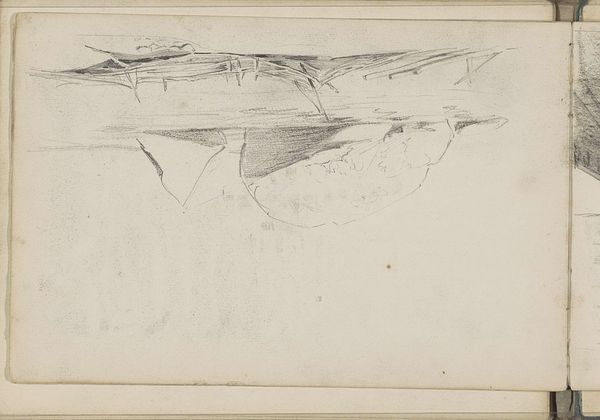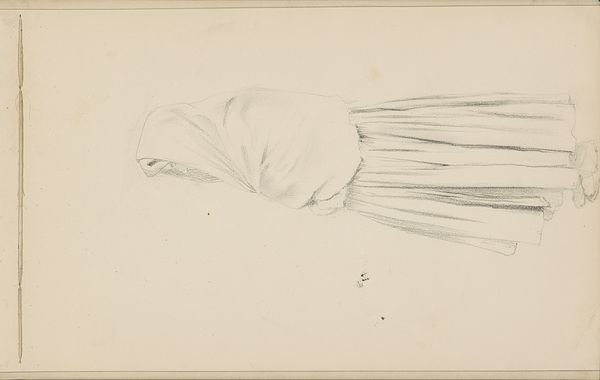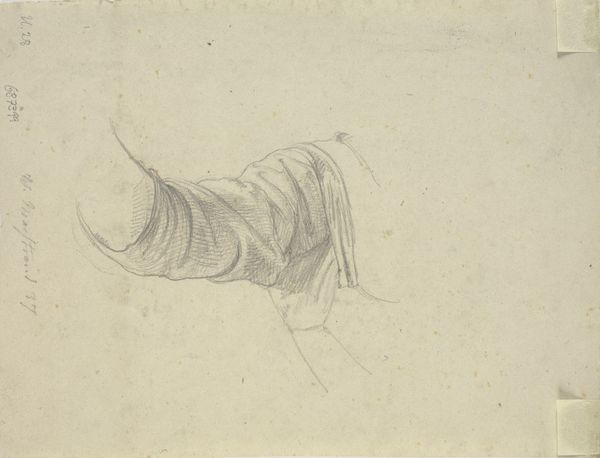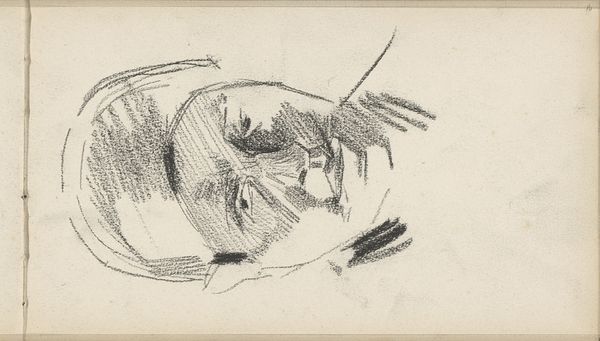
drawing, pencil, graphite
#
drawing
#
amateur sketch
#
light pencil work
#
pencil sketch
#
incomplete sketchy
#
form
#
personal sketchbook
#
ink drawing experimentation
#
sketch
#
pen-ink sketch
#
pencil
#
line
#
graphite
#
sketchbook drawing
#
pencil work
#
initial sketch
Copyright: Rijks Museum: Open Domain
Curator: Well, this looks like an initial sketch for something larger, or perhaps a discarded study. There’s a fragility in the graphite. Editor: Quite right. What we’re viewing is a work entitled "Rechtermouw van een jas," or "Right Sleeve of a Coat," a pencil drawing dating from approximately 1865 to 1913, and part of the Rijksmuseum collection. Curator: There's a real elegance in the shading, creating volume from what could have been just lines. I notice the hand and forearm are subtly rendered under the cascading fabric, suggesting an intended wearer even though only the sleeve is visible. Editor: And in this period, particularly amongst amateur artists honing their skills in the sketchbooks of the day, depicting clothing fragments became a common trope. Everyday garments acquired an almost emblematic status. Curator: It transcends simple representation. The repeated, diagonal strokes suggest both texture and movement, almost as if the coat sleeve is animated, poised for an action we cannot see. I find it strangely unsettling, and somewhat emotionally cool despite its rather diminutive scale. Editor: Agreed. Consider too that such drawings, commonplace as they were in instructional settings or amongst circles of friends, granted agency to those often denied formal artistic training, namely women. Such imagery offered an alternative visual lexicon—a powerful, subversive narrative if you will. Curator: Fascinating! It becomes more complex when contextualized socially. Yet the aesthetic merit of line, shading and form remain strong. The interplay of light and shadow hints at the coat’s overall structure and invites prolonged contemplation of what initially appears quite simple. Editor: I’m reminded that these ostensibly informal drawings often provided the crucial groundwork upon which new representational paradigms could later arise. The social value, as you suggest, exists alongside—rather than in competition with— the purely visual impact of these materials. Curator: Ultimately it makes me contemplate how art constantly invites fresh perception—from raw sketch to loaded artefact—demonstrating form is invariably entangled within society and context. Editor: Absolutely. A sleeve might seem unremarkable, but as we see here, through history and analysis, it whispers stories well beyond its fibers.
Comments
No comments
Be the first to comment and join the conversation on the ultimate creative platform.
